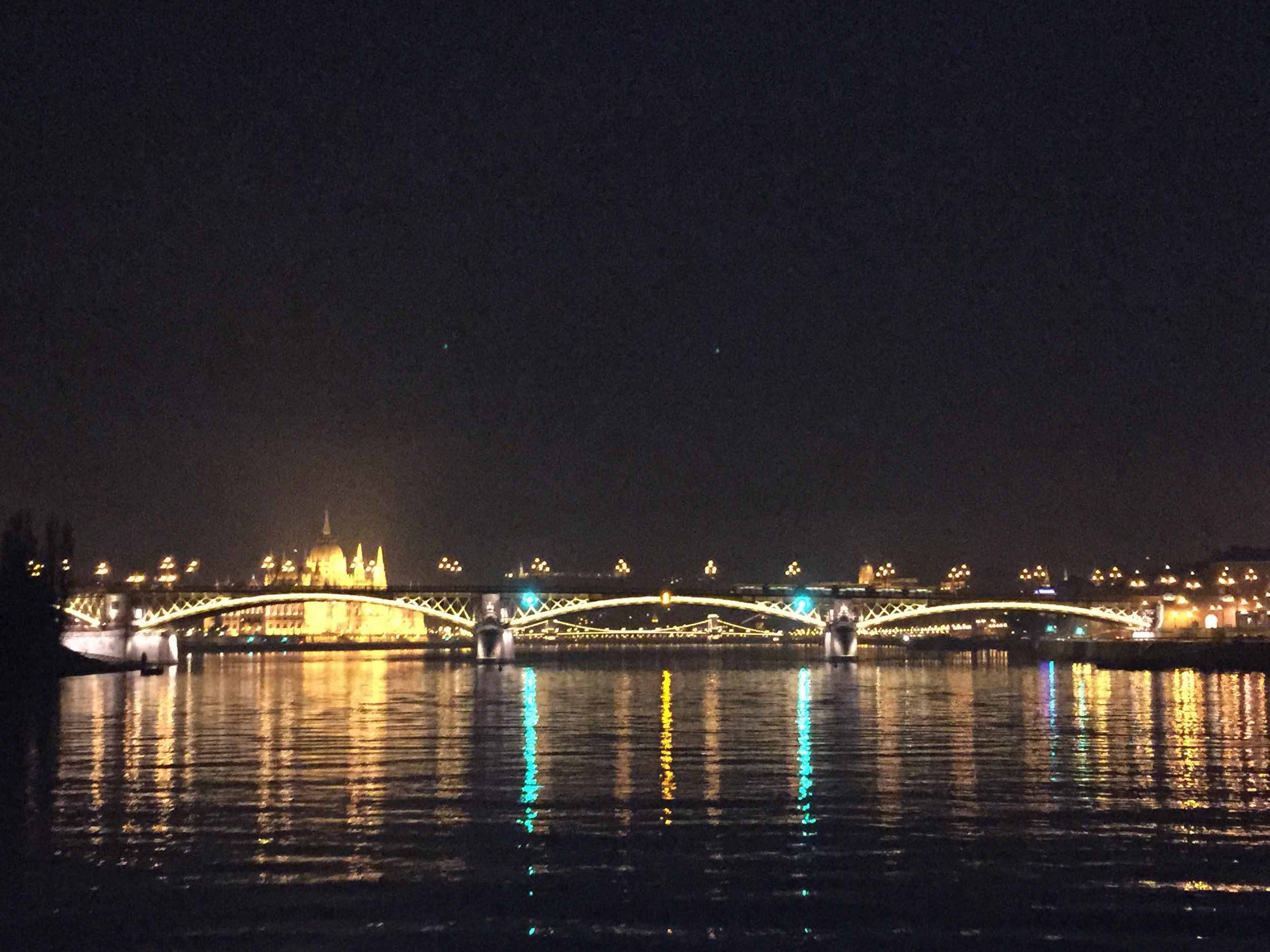Budapest – the Most Underrated City in Europe
This was my first visit to Budapest, a city I have long wanted to see. In looking back, I’m not sure what my expectations were, but knowing this country was under Russian communist rule for so many decades, I was likely anticipating something similar to what Berlin or Prague looked like in the mid-90’s. I could not have been more wrong. I was completely blown away by the city’s architecture, people, nightlife, monuments, cosmopolitan lifestyle and so much more. I now understand why this beautiful city has been dubbed “The Pearl of the Danube” and “The Little Paris of Central Europe.”
I had the incredible fortune to arrive into Budapest at night. I had been pre-warned that this would be a magical sight so I was certainly eager for the experience. To stand on the River Danube and be surrounded by such an awesome assortment of bridges, statues, monuments and buildings in baroque, neoclassical and art nouveau architecture all twinkling and illuminated in the midnight darkness on both sides of the River. It was impossible to snap enough photos to capture the moment.
To appreciate Budapest (pronounced Buda-Pesht), you have to know a little about it’s unique history. It is the capital of Hungary and home to nearly 2 million people so it’s a very large city. What we see today is actually the merging of two cities that span both sides of the Danube – historic (and hilly) Buda to the east and the more cosmopolitan (and flat) Pest to the west.
Budapest is a glorious city that is easy and fun to walk around. We begin our day at the UNESCO World Heritage Site Castle Hill Area in historic Buda where most of the city’s old streets and medieval buildings can be found. We start at the far end of Castle Hill where there are two museums in the Royal Palace that are worth touring if you have the time – the Hungarian National Gallery and the Budapest History Museum.
Next we stop into the stunning neo-Gothic Matthias Church with its impressive colorful tiled roof unlike any I’ve ever seen before. Then we step over to Fisherman’s Bastion, a walkway built on hundreds year old fortification walls, which provides the most impressive views of the Danube and the grand Parliament Building on the Pest side.
The extremely clean cobblestone streets of the Castle Hill area are fun to stroll along and interspersed you will find high-end cafes, restaurants and boutiques selling handmade Hungarian goods of embroidery and porcelain.
We opt to grab lunch in the restaurant at the one-year old Balthazar Hotel, a contemporary designed boutique hotel set inside a refurbished historic building. Each of its 11 rooms are uniquely decorated and we vow to stay at this hotel when we are lucky enough to return to Budapest again. The owners of the hotel also run a few other restaurants in the area (and across the River) and both Pest-Buda and Pierrot look to be fantastic options for either lunch or dinner.
After lunch, we are ready to head over to the Pest side of the city so we walk to the historic funicular train located near the Royal Palace that was built in 1870 and still operates today. It takes us down the hill so we can walk across the bridge to the Pest side.
The entire city has a very convenient underground subway system and taxis are a welcome inexpensive option as well. In Pest, we tour the impressive Heroes’ Square, which stands in memory of the great leaders in Hungary’s history. The Square is flanked by two museums - the Museum of Fine Arts and the Hall of Art (contemporary Hungarian and international art).
Connecting the inner city with Heroes’ Square is Andrássy Ut, an elegant and iconic avenue that dates back to 1872. It immediately reminds me of walking Rue Saint-Honoré toward Place Vendôme in Paris due to its high-end shopping and impressive architecture.
Budapest, from its inception, has been a place of thermal spas, which is why many call it the city of “healing waters”. If you have a chance to experience the thermal waters while visiting, it’s an experience unlike anywhere else. The city has over a dozen spas, but the most famous ones are the Széchenyi and Gellért Baths. You can opt to enjoy the thermal waters indoors or out plus there’s a range of aromatherapy and massage treatments also available. We enjoy our spa time at the Hotel Corinthia.
Feeling renewed after our spa experience, we walk down Váci Utca, one of Budapest’s main pedestrian shopping streets with its variety of designer shops, bookshops, gifts and Herend Porcelain (made in Hungary since 1839).
Ready for dinner, we head to the trendy seventh district (or “Jewish Quarter” as the locals call it) where there is a flourishing nightlife scene of bars and restaurants. We stop for a drink at the popular Szimpla, a must-see bohemian warehouse style bar full of crazy art, young tourists and local students.
For dinner we eat at Spíler – a fantastic restaurant that is casual yet chic – I feel like I'm in the meatpacking district of Manhattan. There is a great local crowd (it’s a Friday night) and the menu is an excellent mix of casual Hungarian food like Goulash and other yummy staples like BBQ pork ribs and wood fired pizzas. Everything I eat is excellent including the cocktail they recommend – the “porn star” martini, which is a delicious drink that reminds me of spiked sherbert ice cream. After dinner we cross the walkway to Spíler Shanghai (same owners) where a DJ is spinning in the downstairs lounge and the crowd again is cosmopolitan and a fascinating mix of locals and Euros.
We head back at the end of a very long and fulfilling day wishing we had more time to explore this vibrant and eclectic place. One needs a minimum of 3 - 4 days to fully explore and appreciate this gem of Central Europe. It is not often I discover a city that I would place at the top of my personal list of European favorites (Paris, Vienna, Madrid, Florence), but Budapest has won my heart and I will be back soon.














